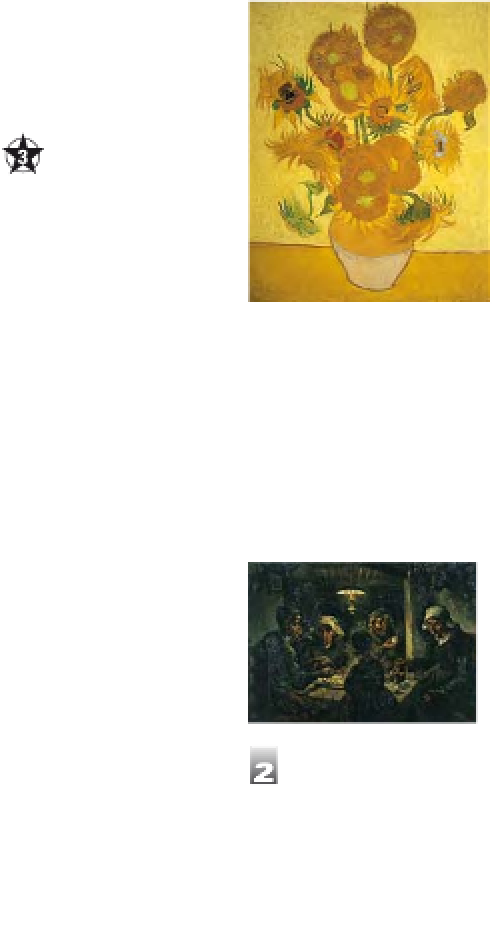Travel Reference
In-Depth Information
Van Gogh Museum
The most comprehensive collection in the world of Van Gogh's work was
amassed by his art dealer brother Theo, and is housed in this museum. It
includes more than 200 of his paintings, over 500 drawings and hundreds of
letters, as well as his Japanese prints and works by contemporaries - though
not all are on permanent display. Gerrit Rietveld's airy building, opened in
1973, sets off the paintings to perfection. The display follows Van Gogh's
development from the murky peasant scenes of the
e
arly 1880s
to the anguished final works. An ellipse-shaped extension
designed by Kisho Kurokawa was added in 1999.
4
Van Gogh Museum façade
The museum has a
useful self-service
café, situated on the
ground floor.
To avoid the crowds,
arrive at opening
time. Stick to the
chronological order
of the display, and
read the excellent
English labels.
Sunflowers
This vibrant painting (1889)
was intended to be one of a
series of still lifes to fill the
“Yellow House” at Arles. Van
Gogh chose sunflowers because
he was expecting Paul Gauguin,
and knew his friend liked them.
The predominant yellows and
oranges contrast with strokes
of brilliant mauve and red.
2
5
3
0
1
9
6
7
8
•
Paulus Potterstraat 7
• Map C6
•
020 570 5200
• www.vangogh
museum.nl
• Open 10am-6pm daily,
10am-10pm Fri
• Admission: adults €9;
children 13-17 €2.50
(under 13s free)
•
Audio tours free;
group tours by
appointment
The Bridge in the
Rain
This work, painted in
1887, illustrates Van
Gogh's interest in
Japanese art, in particular
Utagawa Hiroshige.
However, Van Gogh used
far brighter colours and
greater contrasts.
The Potato Eaters
The culmination of his
years in Nuenen, this was Van
Gogh's first major composition
(1885). He wanted to portray
the peasants realistically, not
glamorize them, but the
painting was not the critical
success he had hoped for.
16












